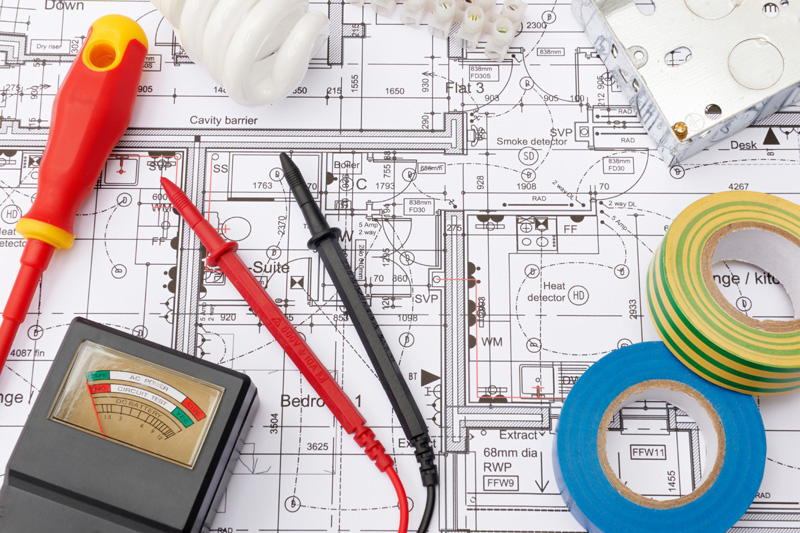
Have you ever wondered about the power quality of your home’s electricity? Do you even know what the term ‘power quality’ means? And do you know what causes your power to fluctuate? Let’s take a closer look at the delivery of electricity and why the quality of power can vary from time to time.
No guarantees
Most householders expect their electricity supply to be within tolerance and available 100% of the time. Unfortunately, it’s not practically possible for suppliers to guarantee this at an economic price point. Unlike any other product, the quality of electricity cannot be assessed until it’s delivered. Electricity is used as it’s produced and, by the time it reaches your home, it will have passed through a number of different transformers, a good many miles of transmission lines, and will have been mixed with the output of other electric supply generators.
Categories of poor power quality
Poor power quality falls into two main categories – supply quality problems and installation and load-related problems. It’s almost impossible to separate these two because disturbances caused by equipment at one place could result in disruption, or damage, at another. For example, a heavy load in a factory unit on a small housing estate could cause a voltage dip in several nearby homes when initially switched on.
There are 7 supply quality problems:
Supply interruption
A total loss of power that lasts for over 60 seconds, normally caused by transmission line faults, generation or distribution plant failure, or load shedding during a system overload.
Transient interruption
A total loss of power for less than 60 seconds, usually caused by auto-reclosers that restore power after a transient fault (see below). Televisions, computers and other communications equipment will shut down.
Transient faults
Fast, high voltage pulses, caused by inductive load-switching, correction capacitor switching, or the effects of residual lightning strikes.
Under-voltage faults
Under-voltage ‘brownouts’ can be deliberately introduced by the supplier to reduce demand. This can result in solenoid drop-out and the repeated re-booting of computer systems. It can, in some cases, cause permanent damage to electronic equipment.
Voltage dips or surges
Short term voltage dips or surges are caused by the starting and shutting down of heavy loads such as large motors. In certain cases, these can cause equipment shutdown and equipment damage.
Flicker
These periodic fluctuations in voltage supply are caused by the presence of cyclical load variations, and result in the flickering of lights.
Harmonic distortion
A distorted voltage waveform can cause reduced torque in motors, overheating inpower-factor correction capacitors and neutral conductors.
Interruptions to the electricity supply and flicker are almost always obvious to the user, but other interruptions may only become apparent when the effects on equipment is noticed. Although customers have no control over supply issues, the resilience of an installation can always be improved. In some cases, the causes of supply problems lie within the user’s own premises.
There are 3 major installation and load related problems – harmonic currents, earth leakage currents and voltage dips and transients:
Harmonic currents
Harmonic currents can be generated by non-linear loads, causing problems in transformers, cables, and motors. Distortion is imposed on the voltage waveform when drawing harmonic currents from the supply. If unchecked, this can cause problems for other users of the supply, and that’s why limits are often imposed on the allowed magnitude of the major harmonic currents.
Earth leakage currents
Today’s modern electronic equipment is responsible for earth leakage currents. The current is normally quite small (less than 3.5 mA), but in very large computer installations, for instance, the combined current can be large. There is also a major high frequency component in the earth leakage current because of the filtering of switching transients in power supply units.
The main function of most earthing systems is to provide safety earths in your home, and not to deal with continuous leakage currents, particularly at high frequencies. The high sensitivity to modern laptop and desktop computers and communications equipment has placed further requirements and strain on the earthing system.
Voltage dips and transients
Most of the voltage dips and disturbance defects that occur are supply issues, but that’s not always the case. Switching of heavy loads, such as arc furnaces and large motors can cause voltage dips, and if the load is inductive, this can result in transient over-voltages.
Because voltage dips normally last for a few seconds as machinery gets up to speed, it can cause problems for voltage-sensitive equipment. Transients can also damage electronics equipment and cause data errors in computer and communications equipment.

